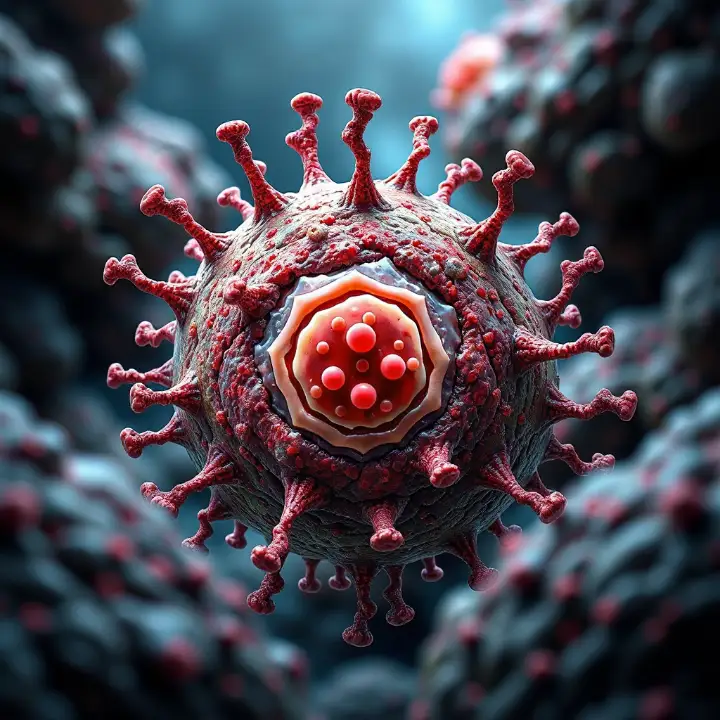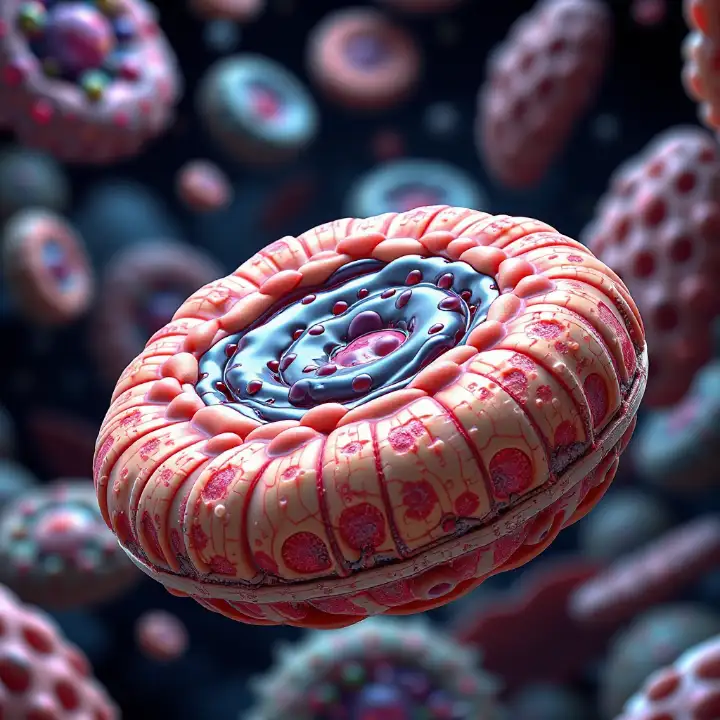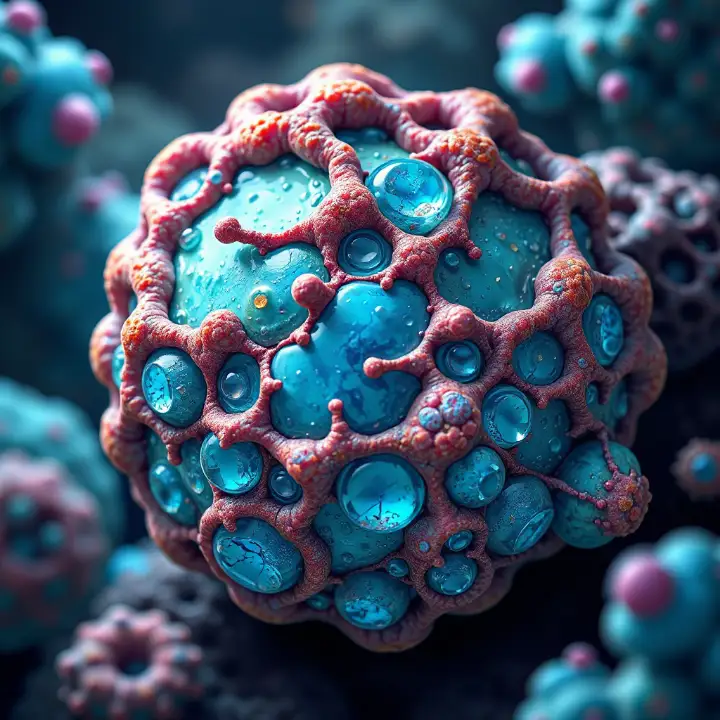What is Dermatofibrosarcoma Protuberans and How Does It Present Clinically

Dermatofibrosarcoma protuberans (DFSP) is a rare type of cancer that starts in the skin. It grows slowly but can invade nearby tissues if left untreated. Each year, about 4 out of 1 million people worldwide develop this condition. In the United States, doctors diagnose around 1,000 cases annually. Early detection plays a critical role in managing DFSP effectively. You should pay attention to unusual skin changes, as sarcomas of primary cutaneous origin e.g. dermatofibrosarcoma protuberans, can become more challenging to treat over time.
Key Takeaways
Dermatofibrosarcoma protuberans (DFSP) is a rare type of skin cancer. It grows slowly but can spread deeper if not treated.
Watch for firm, painless bumps or thick patches on the skin. Finding it early helps with better treatment.
Mohs surgery is the best way to treat DFSP. It works well and lowers the chance of it coming back.
Regular check-ups are important to spot any skin changes. DFSP can return even years after being treated.
Genetic tests can confirm DFSP and help plan treatment, especially for serious cases.
Clinical Features of Sarcomas of Primary Cutaneous Origin e.g. Dermatofibrosarcoma Protuberans

Appearance and Symptoms
You might notice DFSP as a firm, raised, or nodular growth on your skin. It often starts as a painless, thickened patch or nodule that feels rubbery or fixed to the underlying skin. The tumor can appear in various colors, including skin-colored, reddish, or purplish. Over time, it grows very slowly, sometimes taking months or even years to become noticeable.
Feature | Description |
|---|---|
Presentation | Usually presents as a painless thickened area of skin (plaque) or nodule. |
Texture | Feels rubbery or firm to touch, fixed to underlying skin. |
Color | May be red-brown or skin-colored. |
Growth Rate | Grows very slowly over months to years. |
Size | Ranges from 0.5–25 cm in diameter. |
Symptoms | Often asymptomatic; pain or redness reported in less than 20% of cases. |
In its early stages, DFSP may resemble a scar, pimple, or birthmark. Its irregular margins and shiny surface can make it stand out from other skin conditions. Unlike many other sarcomas of primary cutaneous origin, DFSP rarely causes pain or itching until it progresses to later stages.
Common Locations
DFSP most commonly affects the trunk, including the chest, abdomen, pelvis, and back. You might also find it on your arms, legs, or, less frequently, on your head or neck. Studies show that about 50-60% of cases occur on the trunk, 35% on the limbs, and 10-15% on the head and neck. These areas are often affected because they have a larger surface area and are more prone to minor injuries, which may play a role in tumor development.
Growth Pattern
DFSP tends to grow horizontally, spreading laterally across the skin. This growth pattern allows the tumor to invade deeper tissues over time. In some cases, projections from the tumor can extend up to 3 cm beyond the visible edges, making complete removal challenging. Despite its infiltrative nature, DFSP grows slowly and remains asymptomatic for years. You might not experience pain, swelling, or other symptoms until the tumor becomes advanced or recurrent.
Note: DFSP is locally aggressive but rarely metastasizes, which distinguishes it from other sarcomas of primary cutaneous origin.
Causes and Risk Factors
Genetic Factors
Genetic mutations play a significant role in the development of dermatofibrosarcoma protuberans (DFSP). The most common genetic change involves a translocation between chromosomes 17 and 22. This translocation results in the fusion of the COL1A1 and PDGFB genes. The fusion creates an abnormal protein that promotes the uncontrolled growth of cancer cells. Studies show that this COL1A1-PDGFB gene fusion is present in over 90% of DFSP cases. Another less common genetic alteration involves the SLC2A5-BTBD7 gene fusion, which also contributes to abnormal cell proliferation. These genetic changes are key to understanding why DFSP develops and how it behaves.
Demographics and Risk Groups
DFSP primarily affects adults between the ages of 20 and 50. You are more likely to encounter this condition if you fall within this age range. Men have a slightly higher risk compared to women. However, DFSP is rare in children, making it an uncommon diagnosis in pediatric cases. Understanding these demographic patterns can help you recognize whether you or someone you know might be at risk.
Other Potential Risk Factors
Although the exact cause of DFSP remains unclear, some studies suggest a possible link to trauma or injury in the affected area. For example, you might notice the tumor developing in a region where you experienced a previous injury. However, this connection is rare and not well-established. Most cases of DFSP occur without any identifiable external triggers, emphasizing the importance of genetic factors in its development.
Note: While DFSP is rare, its genetic and demographic patterns make it easier to identify individuals who may be at risk. Early detection remains crucial for effective treatment.
Diagnosis of DFSP

Initial Evaluation
Diagnosing dermatofibrosarcoma protuberans (DFSP) begins with a thorough evaluation by a dermatologist. During the physical examination, the doctor will assess the size, texture, and color of the lesion. You may also be asked about your medical history, including any previous skin changes or injuries in the affected area. Sharing details about how long the lesion has been present and whether it has grown or changed can help guide the diagnostic process.
Biopsy
A biopsy is essential for confirming a DFSP diagnosis. Your doctor may recommend one of the following methods:
Biopsy Method | Description |
|---|---|
Core needle biopsy | Uses a medium-sized needle to extract a column of tissue. |
Excisional biopsy | A surgical procedure that removes the entire lump for examination. |
Histopathological analysis of the biopsy sample provides critical information. DFSP typically shows spindle-shaped cells arranged in a storiform (whorled) pattern. You might also hear about its "honeycomb" infiltration into subcutaneous fat. These features, along with rare mitoses, indicate its low-grade malignant nature. Immunohistochemistry often reveals strong CD34 positivity, which helps distinguish DFSP from other skin tumors.
Tip: Early biopsy and histopathological analysis are key to identifying DFSP before it invades deeper tissues.
Advanced Testing
In some cases, advanced testing is necessary to confirm the diagnosis. Immunohistochemistry can detect specific markers like CD34 and vimentin, which are commonly expressed in DFSP. Genetic testing for the COL1A1-PDGFB fusion gene provides additional confirmation. This fusion gene is present in over 90% of DFSP cases and plays a role in tumor growth.
Benefit of Genetic Testing | Explanation |
|---|---|
Identification of Fusion Gene | Present in over 90% of DFSP cases, aiding in diagnosis. |
Treatment Guidance | Helps in determining the use of imatinib for effective treatment. |
Differentiation from Other Tumors | Assists in distinguishing DFSP from similar tumors for better management. |
Genetic testing also helps guide treatment decisions. For example, imatinib, a targeted therapy, is effective for advanced or metastatic DFSP cases. By combining biopsy results with advanced testing, your doctor can ensure an accurate diagnosis and develop the best treatment plan for you.
Treatment Options for DFSP
Surgical Treatments
Mohs Micrographic Surgery as the Gold Standard
Mohs micrographic surgery is the most effective treatment for dermatofibrosarcoma protuberans (DFSP). This technique involves removing the tumor layer by layer while examining each layer under a microscope. It ensures complete removal of cancerous cells while preserving as much healthy tissue as possible. This precision minimizes recurrence and improves cosmetic outcomes.
Surgery Type | Local Cure Rate |
|---|---|
First Mohs Surgery | 93.4% |
Second Mohs Surgery | 98.5% |
Overall 5-Year Rate | 100% |
The high success rate of Mohs surgery makes it the preferred choice for DFSP treatment. You can expect excellent long-term outcomes with this approach.
Wide Local Excision as an Alternative
Wide local excision is another surgical option. It involves removing the tumor along with a margin of healthy tissue to ensure complete removal. While effective, this method may require larger margins, leading to a higher likelihood of reconstructive surgery. Studies show that wide excision has a 0% recurrence rate when performed with adequate margins, making it a reliable alternative if Mohs surgery is unavailable.
Non-Surgical Treatments
Radiotherapy for Inoperable Cases or Recurrence
Radiotherapy can be an option when surgery is not feasible. It is particularly useful in the following scenarios:
When surgical margins are positive and further resection is not possible.
After wide excision if the margins are narrow.
As an alternative when surgery could cause significant cosmetic or functional impairments.
To lower recurrence risk when there is uncertainty about clear surgical margins.
Radiotherapy helps control tumor growth and reduces the chance of recurrence, especially in challenging cases.
Targeted Therapy (e.g., Imatinib) for Advanced or Metastatic Cases
Targeted therapy, such as imatinib, offers hope for advanced or metastatic DFSP. Imatinib works by inhibiting PDGF receptors, which play a key role in tumor cell growth. This treatment is particularly effective for cases involving the COL1A1-PDGFB gene fusion. If you have advanced DFSP, imatinib may help shrink the tumor and improve your quality of life.
Post-Treatment Care
Importance of Wound Care and Recovery
Proper wound care is essential after surgery. Reconstructive surgery may be necessary to repair large wounds, especially after wide excision. Keeping the surgical site clean and following your doctor’s instructions can speed up recovery and reduce complications.
Monitoring for Recurrence
Lifelong follow-up is crucial because DFSP can recur even years after treatment. Regular check-ups help detect any recurrence early. Additional treatments, such as radiotherapy, may be recommended to destroy remaining cancer cells. Extended follow-up ensures the best possible outcomes and peace of mind.
Tip: Stay vigilant about skin changes and attend all follow-up appointments to maintain your health.
Prognosis and Follow-Up
Recurrence Rates
Dermatofibrosarcoma protuberans (DFSP) has a high risk of recurrence if the tumor is not completely removed. Marginal excision, which involves removing the tumor with minimal surrounding tissue, has a recurrence rate of 35.7%. In contrast, wide excision, which removes a larger margin of healthy tissue, significantly reduces recurrence rates to as low as 3% over five years. Combining wide excision with Mohs micrographic surgery eliminates recurrence in many cases.
Surgical Treatment Type | Recurrence Rate (%) | Time Frame |
|---|---|---|
Wide Excision | 3 | 5 years |
Wide Excision | 4.2 | 10 years |
Marginal Excision | 35.7 | Not specified |
Combined Excision and Mohs | 0 | Not specified |
Tip: Opting for Mohs surgery or wide excision with clear margins offers the best chance of preventing recurrence.
Risk of Metastasis
Although DFSP rarely spreads to other parts of the body, metastasis can occur in advanced cases. Certain factors increase this risk, including fibrosarcomatous transformation (FS-DFSP), a larger tumor size, and repeated local recurrences. If metastasis happens, it often affects the lungs or nearby tissues.
Key factors contributing to metastasis:
Fibrosarcomatous transformation (FS-DFSP)
Larger primary tumor size
Local recurrence
You should remain vigilant if you have a history of recurrent DFSP or a larger tumor, as these factors may require closer monitoring.
Importance of Regular Follow-Ups
Lifelong follow-up is essential for managing DFSP. Even after successful treatment, the tumor can return years later. Regular skin checks and imaging tests help detect recurrences early. MRI scans are particularly effective for identifying local recurrence, while chest X-rays can rule out lung involvement.
Recommended follow-up practices:
Perform self-examinations and report any concerns to your doctor.
Schedule routine follow-ups, especially if you have a history of recurrence.
Use imaging techniques like MRI or CT scans to monitor for tumor regrowth.
Note: Early detection of recurrence allows for timely intervention, improving your long-term prognosis.
Dermatofibrosarcoma protuberans (DFSP) is a rare skin cancer that grows slowly but can invade deeper tissues. Recognizing its clinical features, such as firm nodules or plaques, helps you seek timely medical attention. Treatment options like Mohs surgery and targeted therapies offer excellent outcomes when detected early.
Why early detection matters:
It reduces recurrence risk, as studies show no cancer return after excision and Mohs surgery in many cases.
Radiation therapy post-surgery keeps 86% of patients cancer-free for over 10 years.
If you notice unusual skin changes, consult a healthcare professional promptly. Early action ensures better results and peace of mind.
FAQ
What makes dermatofibrosarcoma protuberans different from other skin cancers?
Dermatofibrosarcoma protuberans grows slowly but invades surrounding tissues. Unlike many skin cancers, it rarely spreads to distant organs. Its unique genetic mutation and horizontal growth pattern distinguish it from other sarcomas of primary cutaneous origin e.g. dermatofibrosarcoma protuberans.
Can dermatofibrosarcoma protuberans be prevented?
Currently, there is no known way to prevent dermatofibrosarcoma protuberans. Genetic factors play a significant role in its development. Regular skin checks and early detection remain the best strategies for managing this condition effectively.
How long does it take for dermatofibrosarcoma protuberans to grow?
Dermatofibrosarcoma protuberans grows very slowly, often over months or years. Its gradual progression makes it difficult to notice in the early stages. You should monitor any unusual skin changes and consult a dermatologist promptly.
Is dermatofibrosarcoma protuberans life-threatening?
Dermatofibrosarcoma protuberans is rarely life-threatening when detected early. It grows locally and invades nearby tissues but seldom metastasizes. Early treatment, such as Mohs surgery, significantly improves outcomes and reduces risks.
What should you do if you suspect dermatofibrosarcoma protuberans?
If you notice a firm, painless nodule or plaque that grows slowly, consult a dermatologist. A biopsy and advanced testing can confirm the diagnosis. Early detection ensures better treatment options and outcomes.
---
ℹ️ Explore more: Read our Comprehensive Guide to All Known Cancer Types for symptoms, causes, and treatments.
See Also
Exploring Fibrosarcoma: Essential Features and Insights
Recognizing Liposarcoma: Symptoms and Identification Guide
Mycosis Fungoides: A Comprehensive Look at Cutaneous Lymphoma
Large Cell Lung Carcinoma: Insights on Rhabdoid Features
Malignant Fibrous Histiocytoma and Osteosarcoma: Key Insights
